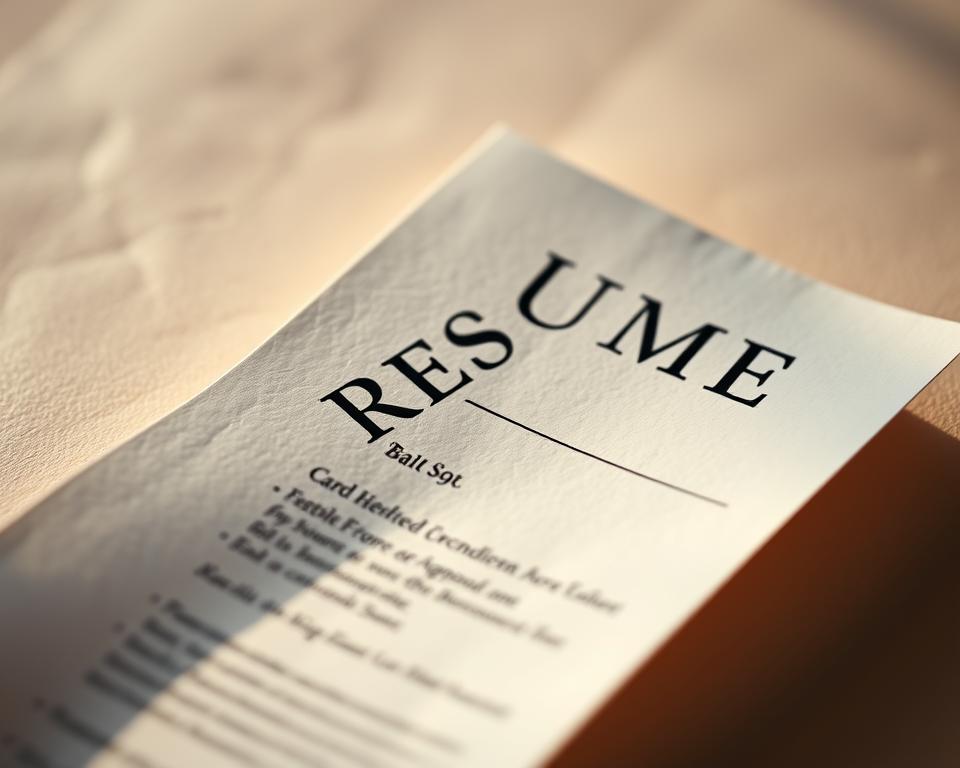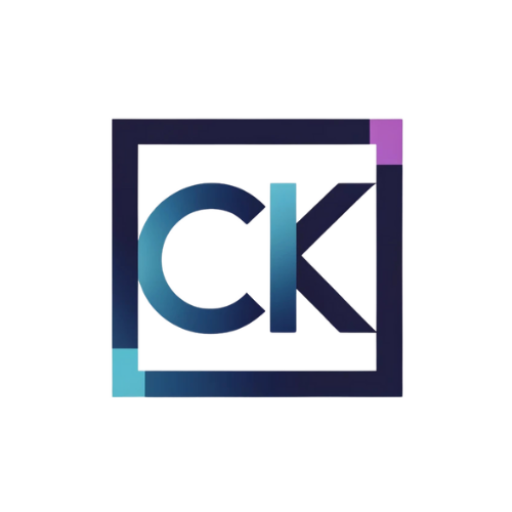Anúncios
Want to know why your applications stall even when you do everything “right”? You’re not alone. The hiring cycle slowed: median time to first offer rose to 68.5 days, and many candidates wait weeks between interview and offer.
The data shows clear traps you can dodge. Tailored resumes convert at roughly 5.75% versus 2.68% for generic ones, and platforms behave very differently—LinkedIn dominates saves while Google Jobs and Glassdoor return varied response rates.
This short guide gives you a fast, data-driven snapshot so you avoid common pitfalls. You’ll learn where to focus applications, which skills and resume choices win, and how to pace your search like a marathon.
By the end, you’ll have clear, practical moves—from channel mix to negotiating pay—so your time and energy lead to interviews and offers, not wasted effort.
Misreading the 2025 job market: treating a cooling market like a sprint instead of a marathon
You need a different pace now. A cooling job market stretches timelines, so your approach should focus on steady momentum rather than quick wins.
Anúncios
What the data says
The median time to first offer rose 22% to 68.5 days. Applications move into first interviews fast—about 6 days—but interview-to-offer averages near 11 days.
Half of candidates see a first interview within 22 days; the 75th percentile waits nearly two months, and the 90th can wait almost four months.
“Plan for longer cycles and build buffers into your timeline.”
How you adapt
Recalibrate your calendar and keep multiple options active so one slow process doesn’t stall your search.
- Plan for ~68.5 days from application to offer; pace outreach and prep.
- Maintain a pipeline of roles and aim for a steady weekly cadence (8–12 targeted apps).
- Track your own response rates and time-to-interview by channel to refine your strategy.
- Use waiting periods for skill refreshers, portfolio updates, and reference prep.
Treat your search like an endurance event: steady effort, regular rest, and iterative adjustments based on your data will protect your energy and improve outcomes.
Confusing quantity with strategy in applications
More applications don’t guarantee better outcomes; precision does. Aim for a focused plan that balances reach with relevance.
The targeting sweet spot is real: the most common offers came from 10–20 tailored applications (about 20.8% of the cohort). That range gives you enough variance to test outreach while keeping customization high.
The targeting sweet spot: the most common offers come from 10-20 tailored applications
When you tailor resumes and match top skills to role language, conversion rises. Build a master resume, then spin fast variants that highlight the three strongest outcomes for each posting.
When high-volume is necessary: why some seekers cross 100+ applications
About 14.3% needed 100+ submissions. If you’re early-career or pivoting, broad reach helps you gather proof of fit and feedback across roles and channels.
Your weekly cadence: half send ≤4 apps; the top 10% send 19—what should you do?
Most job seekers submit ≤4 per week. If your response rate is solid, scale to 8–12 only after messaging and resume are dialed in.
“Measure two signals weekly: interview rate per 10 applications and recruiter replies.”
- Track conversion by role and channel and double down where data shows results.
- Reserve high-volume sprints when replies fall below your baseline.
- Space submissions to leave time for company research and crisp customization.
Relying only on the biggest platform and ignoring response-rate data
You might be saving listings by the dozen, but saves aren’t the same as calls. Big platforms drive visibility, yet they don’t always drive interviews.
Reality check: visibility vs. response
LinkedIn captures roughly 77–80% of saves but its callback rate sits near 3.3%.
By contrast, Google Jobs returns about 9.3%, Glassdoor about 7.3%, and Wellfound about 6.4%. Dice lags at 1.4%, while smaller sites hold 5–6% collectively. Indeed’s share climbed from 6.34% to 10.48% in H1.
Action plan: diversify and track
- Don’t rely solely on LinkedIn—mix in Google Jobs, Glassdoor, and Wellfound based on the roles you seek.
- Create simple tracking: saves-to-apply, apply-to-interview, interview-to-offer for each channel.
- Rotate and prune: scale Indeed where it grows, remove low-yield sources like Dice for your function.
- Use UTM-like tags in your tracker to attribute interviews when ATS hides origins.
Focus on response data, not platform fame—optimize your channel mix every two weeks.
Taking remote work preferences at face value without reading the posting
You probably prefer remote or hybrid work—just don’t assume every silent posting means flexibility.
Survey data shows 83% of candidates want remote or hybrid arrangements, yet over half of listings omit clear location guidance. That gap leaves seekers and employers misaligned.
How to decode vague work arrangements and avoid mismatches
Don’t assume a posting is flexible simply because it’s silent on location. Many companies still wrestle with policy wording, so silence often signals uncertainty, not permission.
- Scan for hidden cues: travel needs, “commutable distance,” or phrases like “in‑office collaboration.”
- Ask early: confirm onsite days, core hours, and relocation expectations before late-stage interviews.
- Use targeted boards: if remote work is essential, focus on sites that filter explicitly for flexibility.
- Document promises: recap agreed arrangements in writing after interviews to avoid surprises post‑offer.
Balance trade-offs, too. Remote freedom helps some roles, while in‑office time can speed mentoring. Align your resume to distributed work signals—async collaboration, tooling, and measurable outcomes—to show fit for flexible arrangements.
job trends 2025 you’re getting wrong: AI is a tool, not the whole strategy
AI is everywhere in applications, but it should sit behind your judgment—not replace it.
Data shows 93% of job seekers use AI for resumes and cover letters, while seven in ten reject one-way AI interviews. Yet 68% say they’d accept an offer without ever speaking to a human.
Use technology and tools to speed work, not to erase your voice. Let AI pull keywords and draft bullets, then rewrite each line with metrics and your specific context.
Prepare for automated screens
- Practice concise STAR-style answers so prompts map cleanly to your stories.
- Test lighting, camera angle, and timing before one-way interviews.
- Keep a short library of story beats (problem, action, result) for fast adaptation.
- Note what AI helped with and what you authored to defend your experience honestly.
Remember: tools amplify work; originality, soft skills, and clear narratives win interviews and hiring decisions.
Ignoring ATS realities when crafting your resume
If your resume trips an ATS, hiring managers may never see your strongest achievements. Systems like Greenhouse, Lever, and AshbyHQ now shape who gets a human review.
Greenhouse holds roughly 29% market share, Lever sits near 9%, and AshbyHQ reached about 14.56%. That data matters because each platform parses files slightly differently.
Greenhouse grows, Lever declines, AshbyHQ rises—why this matters for formatting
Use simple headers, single-column layout, and plain text contact details. Avoid graphics, tables, and complex templates that confuse parsers.
Keywords, clean structure, and measurable impact: your ATS-proof checklist
- Mirror role language: weave core skills into accomplishment bullets, not just a skills block.
- Front-load metrics: lead with measurable impact so both systems and humans notice results.
- Test and iterate: run free parsers, save a base resume, then create role-specific variants to speed tailoring.
Tip: track which variant wins interviews and refine your format over time.
Writing longer resumes instead of deeper ones
Long resumes often hide your best work; clarity wins over page count. Recruiters and hiring managers skim quickly. If every line doesn’t pull toward fit, it dilutes the signal.
Depth over length wins: focused achievements beat long skills lists
Prioritize two to five measurable achievements per role. Use concise, results-first bullets that show scope, efficiency, revenue, or quality gains.
Trim oversized skills sections. Keep only the skills that match the role descriptions you target.
Fewer certifications, stronger LinkedIn presence: what interviewed resumes share
Interviewed resumes in the data had fewer certifications and richer education blurbs. They also linked to strong LinkedIn profiles.
- Limit certifications to those that prove current, role-relevant expertise.
- Feature your LinkedIn URL prominently and ensure it mirrors resume highlights.
- Keep most resumes to one or two pages unless you’re a senior leader.
- Refresh older roles by consolidating tasks and emphasizing transferable outcomes.
“Make each line earn its place; if it doesn’t advance your fit for the job, remove it.”
Skipping tailoring because it “takes too long”
A small, focused edit often doubles your chance of getting an interview. Tailored resumes convert about 5.75% versus 2.68% for generic ones. In Q2, 64.3% of submissions were job‑tailored—that matters.

Use a quick-tailor workflow so you can be both fast and precise. Start with a master resume, pull keywords from the job description, then align your top metrics to the role’s priorities.
- Commit: tailoring more than doubles conversion from application to interview.
- Prepare: build a master resume and create role-specific versions in 10–15 minutes.
- Map: copy phrasing for critical skills and tools and match them to your strongest quantified achievements.
- Lead: place two to three most relevant accomplishments at the top of each role section.
- Sync: update LinkedIn to reflect the tailored emphasis and feature supporting work.
“Use light AI for speed, then edit by hand so your voice and credibility shine.”
Track which tailored variants bring interviews and refine your checklist weekly. Small edits add up — they turn scattershot applications into targeted outreach that yields results.
Overlooking green and skilled trades demand while over-indexing on tech
Don’t overlook high-demand hands-on roles while you chase the largest tech postings. Nearly 90% of construction firms reported trouble filling skilled positions, and that shortage kept pressure on hiring for electrical, welding, and HVAC.
Skilled trades shortages: electrical, welding, HVAC are hot
These fields often hire faster because companies need workers immediately. That urgency can shorten your interview timeline and boost pay in many U.S. regions.
Renewables surge: wind and solar roles among fastest growing
Federal and state projects pushed demand for wind turbine technicians and solar photovoltaic installers. The BLS lists both among the fastest-growing roles, so renewable career paths are expanding quickly.
Tech remains dominant, but diversify into data and design adjacencies
If you lean toward tech, consider adjacent roles in data and product design. Those positions share skills with engineering and development, and they often remain resilient when hiring shifts.
- Broaden your search to trades where demand and faster hiring decisions exist.
- Translate skills into sector language—safety, uptime, and compliance for trades; sustainability metrics for renewables.
- Pursue quick certifications and network with unions and training programs to connect with open roles fast.
Tip: Keep a dual-track search between tech and hands-on roles to hedge your career and move faster when one field slows.
Letting salary expectations float without evidence
Floating a number with no market evidence can leave you underpaid and surprised. Forty-three percent of seekers now target $100k+, yet only 29.3% of postings list pay. That gap forces you to anchor your range with research, not guesswork.
Rising ambitions: use market data to anchor asks
Start by pooling multiple data sources. Use Glassdoor for pay insights, your own interview history, and regional listings to form a realistic range.
Note: advanced degrees can change outcomes—doctorates show ~+35% and master’s about +29% where employers value them.
Only a minority list pay—how to triangulate and negotiate
When pay is silent, tie your ask to measurable impact, relevant experience, and in-demand skills. Share a range first, then nail specifics after you learn scope and metrics.
- Set a range from multiple data points and anchor it to regional norms for hybrid or onsite roles.
- Model total comp if equity or bonuses matter and benchmark to companies in your market.
- Deflect early pressure: restate interest in impact and ask to revisit numbers later.
- Record every figure and time stamp so your negotiations stay consistent over time.
Quick rule: revisit your range quarterly as market data and your interview conversions shift.
Accepting unpaid interview projects without boundaries
Unscoped interview projects can quietly eat days of your time if you don’t set clear limits. Nearly half of job seekers report being asked for unpaid deliverables, and long timelines let free work creep in.
When to push back and how to scope fairly
Ask first for a clear problem statement, deliverables, and the expected time window before you accept any take‑home work.
- Propose a short scoped sample (1–2 hours) instead of multi‑day tasks unless the company offers payment.
- Protect your IP: submit summaries or watermarked slides if you won’t share full implementation.
- Offer a live walkthrough to show your skills without producing free labor.
- Track time spent; long interview cycles can mask excessive take‑home work.
If a company resists fair scoping or refuses compensation, treat that as a culture signal about boundaries.
Use reusable case artifacts you can lightly customize for each role. After you deliver, ask for prompt feedback and clear timing on next steps.
Undervaluing mental health, benefits, and DEI signals in your company selection
When benefits and culture are afterthoughts, your daily work can become unsustainable fast. One in three workers has quit a role for mental health reasons, so you should weigh well-being and flexibility early in the process.

Assess well-being and flexible arrangements upfront
Treat mental health, flexibility, and benefits as core criteria. Ask about workload norms, PTO usage, and meeting cadence to spot burnout risk.
DEI in practice: what to verify
- Check leadership mix, parental leave policies, and active resource groups for inclusive practice.
- Confirm how hybrid or flexible work is measured and how performance is evaluated.
- Probe manager support: coaching cadence, feedback, and escalation paths for issues.
- Look at turnover patterns on Glassdoor and LinkedIn to spot red flags.
Many workers stay in roles for benefits or visa support—so verify sponsorship timelines and healthcare coverage before committing.
During interviews, ask scenario questions about boundaries and time off. Favor companies that are transparent about benefits and mental health support in their materials. That clarity protects your well-being and career longevity.
Underusing platforms like your LinkedIn, portfolios, and niche boards
You don’t need more listings—you need better presence across the right platforms. LinkedIn still drives most saves, but Glassdoor, Wellfound, FlexJobs, and niche boards each bring different audiences and signals.
LinkedIn optimization: headline value, featured work, credibility signals
Upgrade your headline to state the value you deliver, not just a title. Use the Featured section to show case studies, not PDFs of resumes.
Keep resume and LinkedIn aligned so recruiters see consistent experience and skills. Small mismatches can cost calls.
Beyond LinkedIn: Indeed, Glassdoor, Wellfound, FlexJobs, WeWorkRemotely, Hired
Match boards to goals: Indeed for broad reach, Glassdoor for salary and response insight, Wellfound for startups, and FlexJobs or WeWorkRemotely for remote roles.
Consider Hired for curated tech matches and use different platforms to test where your applications land best.
Networking that compounds: webinars, communities, and authentic follow-ups
Engage weekly: comment, share short insights, and DM with a clear ask. Attend webinars and follow up with a concise note that references the event and your value.
- Build a simple portfolio or case page to show process and outcomes.
- Use tools to track outreach, replies, and introductions so efforts compound.
- Ask for short intro calls with specific agendas—respect people’s time.
“Repurpose your best content across platforms to signal credibility consistently.”
Mismanaging interview expectations and follow-through
Interviews move quickly at first, then often slow to a crawl—plan for both bursts and lulls. You usually see a screening within about 6 days, but the interview-to-offer window averages near 11 days. That split shapes how you follow up and stay active.
Timing gaps and company variability
Some companies move fast—Teksystems averages ~6.5 days and Cisco ~6.7. Others take much longer: Google near ~9 days, Amazon ~22, and Pinterest can stretch to ~37.5 days.
Adapt your cadence by tracking who responds quickly and who lags so you can prioritize prep and follow-up accordingly.
Prep for virtual, AI, and VR assessments
Virtual interviews are common. Test your mic, camera, and connection before every call. Keep concise notes at hand to stay focused.
Practice one-way AI screens with short, structured answers. For VR or simulation tasks, prioritize problem-solving and clear communication under pressure.
Practical follow-through checklist
- Expect a quick callback window, then a longer decision lag—plan follow-ups accordingly.
- Schedule other interviews while you await offers to keep momentum.
- Send tailored thank-you notes highlighting one crisp value and a relevant work sample.
- Track interviews, stakeholders, and promised timelines so you spot stalls early.
- Politely nudge if timelines slip and offer a fresh metric or portfolio piece to renew interest.
Stay human: curiosity, empathy, and teamwork shine through tech screens—soft skills and clear examples often win where tools and automation fall short.
For employers and recruiters: strategy misfires that repel top candidates
Candidates judge your company by the clarity and speed of your hiring flow. When postings hide location, omit pay, or stretch approvals, you lengthen the path to offer and lose interest.
Vague work arrangements and slow approvals lengthen time-to-offer
Time to first offer averages 68.5 days, and interview-to-offer waits often outlast pre-interview timelines. That gap costs momentum.
Clear work arrangements—location, onsite days, and travel expectations—cut mismatches and reduce pipeline churn.
Transparency, speed, and humane processes win scarce talent
Be fast, clear, and fair. Publish salary ranges and benefits; only about 29.3% of listings do now, and that frustrates serious candidates.
- Clarify work arrangements and locations in every posting to reduce dropouts.
- Streamline approvals so the ~11-day interview-to-offer lag doesn’t cost you top talent.
- Use short, paid or time‑boxed take‑homes for assessments to protect goodwill.
- Post where response rates are high, not just where saves pile up; audit platforms with your data.
- Standardize interview loops, equip teams with rubrics, and train interviewers to give humane, prompt feedback.
Treat recruitment as brand marketing: a smooth, transparent process spreads fast among candidates and improves your ability to hire.
Conclusion
This closing note gives clear, actionable moves so your search runs on data and steady momentum.
Remember the pace: expect about 68.5 days to offer, with quick screens near 6 days and longer interview-to-offer gaps around 11 days. Aim for 10–20 tailored applications and use metrics-forward resumes to double your response.
Diversify beyond LinkedIn toward sources that show higher callbacks, format for ATS (Greenhouse, Lever, AshbyHQ), and confirm remote or hybrid details early to avoid surprises. Treat AI as a drafting tool and keep your human experience front and center.
Balance tech with high-demand skilled fields and renewables, anchor salary asks in market data, and protect your energy by setting boundaries on unpaid work. Iterate weekly; small improvements in your process compound into offers and better career choices.



